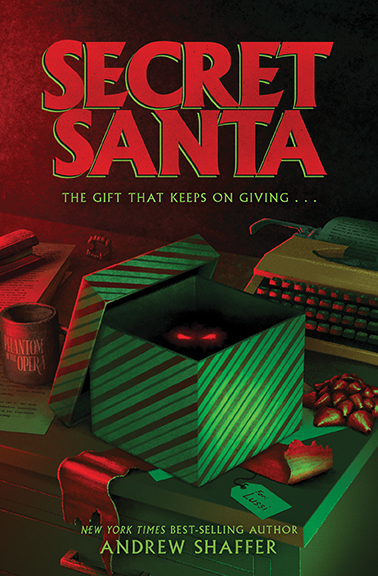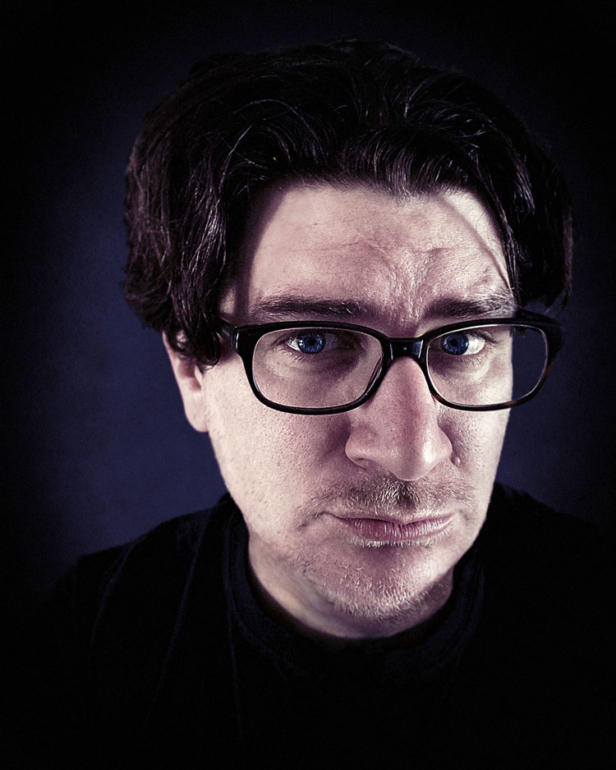The Office meets Stephen King, dressed up in holiday tinsel, in Secret Santa – a fun, festive, and frightening horror-comedy set during the horror publishing boom of the Eighties, by New York Times best-selling satirist Andrew Shaffer.
We spoke to Andrew about setting his novel in the Eighties and how Gremlins, Ghoulies and Critters inspired Secret Santa...
You’ve written New York Times best-selling satires and mysteries, as well as nonfiction. Secret Santa is your debut in the horror genre. What led you to write a horror novel?
After finishing the second Obama Biden Mystery, I joked that I was ready to write something less horrifying than politics. Following politics too closely can be anxiety-inducing! Writing a horror novel felt like a nice break from all of that, a chance to ignore the news for a while. Of course, I had no idea that when I started Secret Santa that 2020 would turn out to be the year the twenty-four-hour news cycle swallowed us all.
You’re known as a “pro of parodies” (Associated Press) and have been celebrated for your humour writing. How do horror and humour work together?
Horror and humour are two sides of the same coin. Stand-up comedians have the formula distilled to its most basic components, the setup and the punch line. Horror ratchets up the tension; humour relieves it. Mystery and humour work together in much the same way.
Horror comedy is a constant tightrope act. Lean too much into the comedy, and the horror isn’t scary; make things too horrifying, and the jokes fall flat. Getting the combination right was the most difficult part about writing Secret Santa. I spent a lot of time going back and forth with my editor to make sure everything balanced out just so.
The book takes place during the horror publishing boom of the 1980s. Why did you choose to set the novel in this industry and decade?
I’ve been writing professionally now for over a decade and have a wealth of publishing tidbits and gossip from talking to my editors and other authors. Setting a book inside a publishing house is something I’ve wanted to do for a while, but had never found the right story.
The Eighties were a natural fit – horror publishing was booming at the time, and superstar authors were being minted left and right. The period setting isn’t just a gimmick; it’s integral to the story. It’s not a story I could have told in the present, although readers will spot a lot of parallels between the Eighties and our current cultural and political climate.
Do you have experience working for a publisher?
I’ve never worked in publishing, but I’ve been to more than enough publishing parties during BookExpo to fake it. And, although it’s nowhere comparable to a large publishing house, I do run a small press with my wife out of our home in Louisville. We don’t have interns; we have cats.

You grew up reading Eighties horror paperbacks. How were you introduced to horror? And were there any books that you read as a kid that inspired you when writing Secret Santa?
My first exposure to horror was probably through the movies – I have clear memories of my aunt taking me multiple times to see Gremlins, and my grandpa showing me Ghoulies and Critters at way too young an age. Those three films absolutely influenced Secret Santa.
As far as books go, I ‘levelled up’ to adult horror fairy early on. (I completely skipped middle-grade and YA, which weren’t really a thing in the Eighties). By age ten I was checking out Stephen King and Clive Barker from the town library, which was within walking distance. My grandma and I traded horror paperbacks, too. I still remember the first time I read a book with an explicit sex scene and thought: ‘Grandma’s way too old for this book! I better, uh, hang onto it so she isn’t shocked by it’ [haha]. The book was Eric Sauter’s Predators, a paperback I had completely forgotten about until reading about it on Paperbacks From Hell co-author Will Errickson’s blog.
Christmas isn’t all tinsel and carolers. It’s also about monsters like the Krampus. Can you tell us a little bit about the spooky folklore that has been associated with the holidays? And why do you think these traditions have been cultivated?
One can imagine ancient Europeans huddled around the fire on long winter nights, praying for the return of warmer weather – and with it, fertile soil and crops. They also spun stories on these dark nights to keep children entertained… and to keep them in line.
The German version of Santa Claus, St. Nicholas, visits children on St. Nicholas Day accompanied by a Krampus (‘the Christmas Devil’). St. Nicholas is said to reward well-behaved children with gifts. If you are naughty, however, he leaves you to the Krampus, who may either: A) hit you with a bundle of sticks repeatedly, or B) toss you into a basket and take you with it back to hell. Yes, hell.
Although our modern, American Santa Claus doesn’t travel with a devil-like companion, he does leave coal for naughty children. Which isn’t that bad, actually. Is it any wonder German children are said to be incredibly well-behaved around the holidays compared to their American counterparts?
Secret Santa features a Percht (pronounced PAIR-kt or PAIR-cht). Can you tell us the history of this chilling monster?
The Perchten (the plural of Percht) are followers of Frau Perchta, the ‘Christmas Witch’ of pre-Christian Alpine folklore. Frau Perchta, like our Santa, both rewards and punishes children. If you’re good, she’ll leave you something boring, like a ball of yarn. If you’re bad, however, that’s when she brings her A-game. Didn’t finish your homework? She’ll take out the long knife she carries around her waist and slit your belly, then stuff you with rocks and straw. That ball of yarn doesn’t look so bad now, does it?
American readers will notice that the Percht described in Secret Santa shares many characteristics with the Krampus, such as the devil-like face and fur-covered body. Sometimes the only way to tell the two creatures apart is to count the horns – a Krampus will have two horns, whereas a Percht will have four to ten.
During Advent festivals, villagers traditionally dressed up in elaborate Perchten costumes and marched through the streets, sometimes fighting against less demonic-looking counterparts. This ritual was said to drive out the ‘evil spirits’ of winter.
Perchtenlauf parades continue to this day in Austria, similar to the ‘Krampus runs’ that originated in the Alps. The custom varies between regions – even the spelling and pronunciation isn’t standardised. The Percht in Secret Santa is rooted in pagan folklore, but has been heavily fictionalised and crossbred with the Eastern European hausgeist.
Have you ever received any terrifying Secret Santa gifts?
I’m the one who brings the terrifying Secret Santa gift, not the one who receives it. In 1999, I found a clearance bin filled with Christmas-themed Big Mouth Billy Bass singing wall hangings. I bought half a dozen of them for a buck apiece and hid them under the tree for everyone in my family. It wasn’t very anonymous, though, because I forgot to give myself one. A rookie mistake for the budding prankster.
Since then, they’ve been popping up in family gift exchanges. The bass’s singing has slowly degraded over the years as the batteries have worn down. You could call his rendition of Jingle Bells quite haunting.
Is there anything else that you’re working on that you can tell us about?
When the coronavirus lockdowns began, it seemed like everyone was using the downtime to master new skills. I don’t know if that really panned out for anyone, but I did begin making music again after a 20 year hiatus (I set my keyboard and guitar down one day during college and never picked them up again, for whatever reason). This summer, I recorded a synth-heavy version of Last Christmas by Wham! and christened it the theme song to Secret Santa. Dan Brown released a classical album alongside his recent children’s book, so there’s a precedent for this sort of thing.
Secret Santa by Andrew Shaffer is out now.
